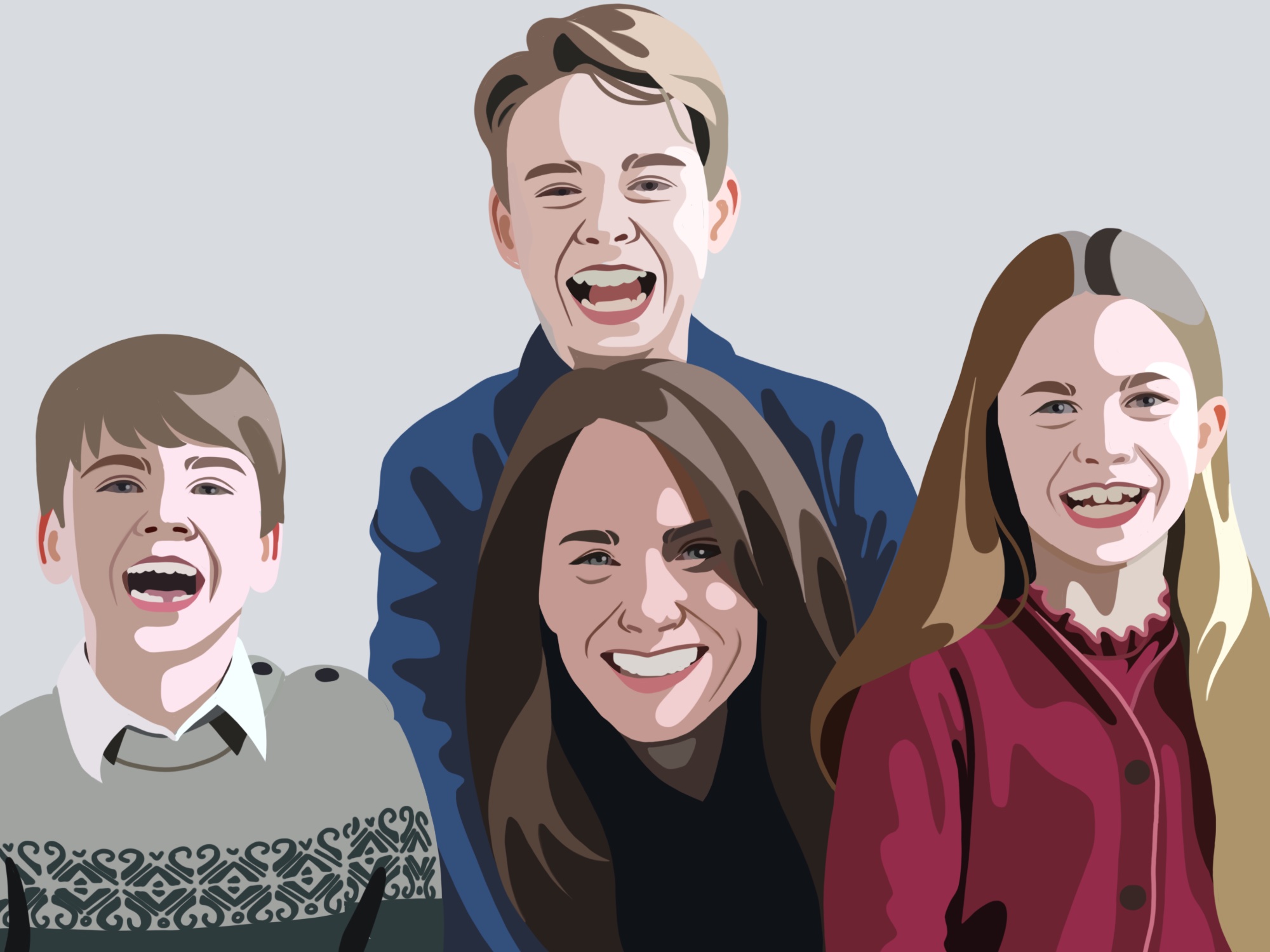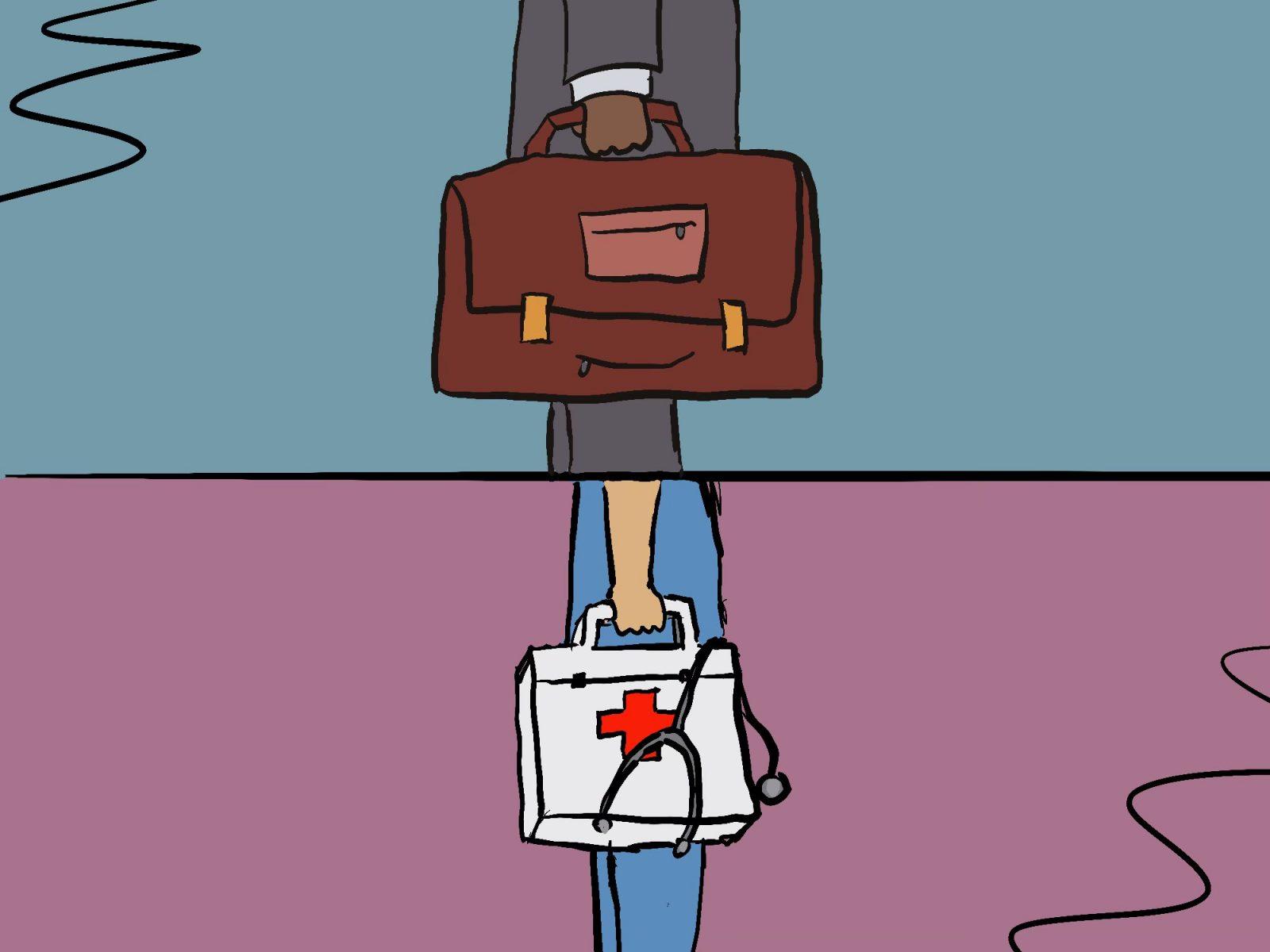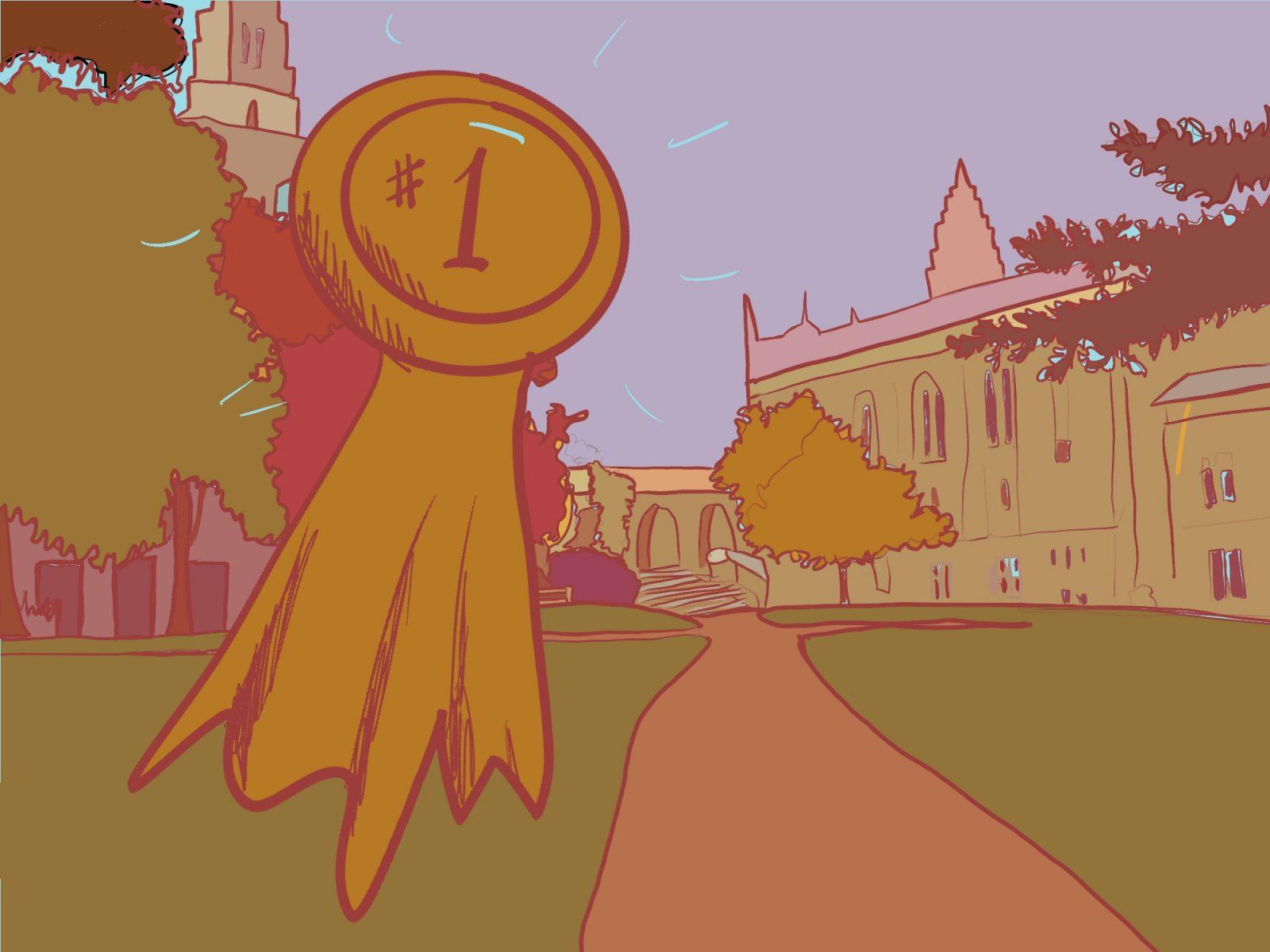Beyond the gates of Buckingham Palace, separating the royal residence from the busy rotary outside, is a simple, black fence.
What makes this fence special are the posts, embossed with a crown atop capital letters: “EiiR.” The “E” stands for Elizabeth. I don’t think she needs much introduction.
Emblems of the deceased monarch are littered all throughout London.

In the two and a half days I spent in the city over spring break, I saw her royal cypher on mailboxes, on bank notes bearing her visage and in the Royal Opera House at the bottom of the massive, red stage curtains, which proudly bear the United Kingdom’s coat of arms on top. The golden cypher stands as tall as the dancers taking their curtain calls at the end of a performance.
King Charles III, outshined by his mother even in her death, makes his mark on some guards’ uniforms. He hasn’t been around for very long, you see.
Bits and pieces of the monarchy are in reach at all times. Knowing that, I wasn’t surprised by the media frenzy when Kensington Palace posted a heavily altered photo of Catherine, Princess of Wales — better known as Kate Middleton — and her children on X and Instagram for Britain’s Mother’s Day that warranted “kill notice” from the AP for failing to meet journalistic standards. The fervor that already surrounded her months-long public absence due to abdominal surgery reached a fever pitch.
It was amusing to look at all the outlandish explanations that social media created about where she’d gone.
Lots were convinced that she was planning to separate from her husband, William, the heir to the British throne. Others joked that her surgery was actually a Brazilian butt lift or some other delicate cosmetic procedure. The internet ran wild with crackpot theories.
The Prince and Princess of Wales’ social media accounts issued an apology signed by Kate, which said, “Like many amateur photographers, I do occasionally experiment with editing.” Her team left the situation with that for several days, spawning another round of ridicule and doing little to convince the public that nothing was wrong.
The Crown has done little to protect Kate from scrutiny, allowing her to take the blame for this modern media mess. Despite all the resources at its disposal, the Crown has not and is not protecting women who marry into their millenia-long traditions and values.
When Meghan Markle married Prince Harry, she was eventually met with disdain from many of her in-laws along with the British public. She and Harry both claimed that little was done when she told staff about getting help for her mental health before they left the U.K. and stepped down as working royals.
Beloved Princess Diana, Charles’s larger-than-life first wife and mother to William and Harry, also claimed she was similarly ignored for bringing up her personal issues.
No doubt, the Palace allowing Kate to remain out of the public eye for so long is a step up from how they treated other women who joined the family — or is it continued favoritism for her over Meghan? Even though there are plenty of pieces published criticizing how the public has treated Kate, I doubt there were nearly as many for Meghan Markle, both in her time as a working royal and even now.
But throwing Kate to the media dogs for this picture that she, in my opinion, had no real hand in, completely undermines whatever progress existed when it comes to the Royal Family and how they protect women, especially because they seem perfectly capable of protecting alleged sexual abuser Prince Andrew.
Their handling of the situation was made all the more worse with Kate’s recent announcement of her cancer diagnosis. In fact, everything that has transpired since January, with all the conspiracies and jokes, paints a deep lack of empathy from a world that thinks itself entitled to knowing the ins and outs of a woman’s life. She, Meghan, Diana and all the women who married into the family before them have all been the scapegoats for scandals out of their control, and examples of how difficult it is for a woman of any status to simply exist in her world. In historical context, this is a good reminder of what King Henry VIII did to half of his wives. Spoiler alert: three died. He killed two.
This is usually where we decide that the U.K. is better off with the monarchy abolished. It would be easy to conclude, from our American perspective, that the Crown is a crumbling, outdated institution that clings to the U.K. like a stubborn wart on the country’s foot.
No matter how hard anyone will advocate for it, I see no end to this crumbling, outdated institution. The cracks in the Crown were never more obvious than in this PR nightmare.
The untouchable royal narrative is dying in their hands. But it’s hard to imagine that a country like the U.K., whose monarchy is so deeply intertwined with their history and way of life, would continue on without it.
The country may have a new king, but they’ve far from moved on from their last monarch. It will take years for workers to replace Elizabeth’s royal cyphers around London, if they even replace them at all.
And what would the British press do without a section for the royals? A whole segment of viewership would be wiped clean away with the loss of the King and his constituents. They’re also a piece of the misogynistic puzzle, having personally victimized Kate, Meghan and Diana for decades.
So, as much as people want to believe that the monarchy can be cut off from Britain, they should perhaps realize that the monarchy is less a wart, and more a part of the lifeblood of its country, and bleeding it out would prove difficult at best, destructive at worst.
Even outside of the UK, we’re clearly still enamored with their lives, if the manhunt for Kate was any metric to go by.
At least once a year, my mother brings up her little girl memories of watching Princess Diana walking down the aisle to her doomed marriage over forty years ago. Much like the women who are unfortunate enough to marry into it, we are stuck too, by deciding to care about this old, wealthy, white institution.


























































































































